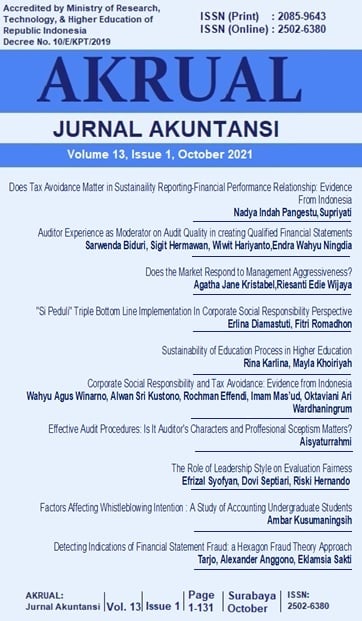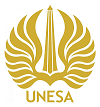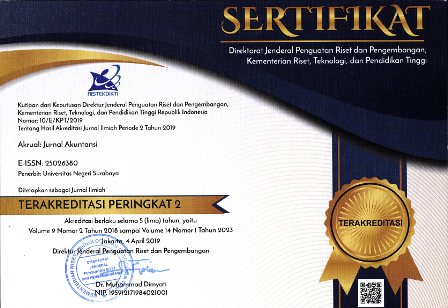"Si Peduli" Triple Bottom Line Implementation In Corporate Social Responsibility Perspective
DOI:
https://doi.org/10.26740/jaj.v13n1.p41-55Keywords:
Corporate Social Responsibility, Triple Bottom Line, Community DevelopmentAbstract
This study aims to explain and interpret the Corporate Social Responsibility practices of PT Semen Indonesia (Persero) Tbk., which applied in “SI Peduli” program, one of the pillars of SEMEN INDONESIA BERSINERGI besides SI Cerdas, SI Prima, SI Lestari, which are the company’s interpretation on the triple bottom line theory. This study only interpreted “SI Peduli”, a collaborative program between the company and its partners. This research uses a descriptive qualitative approach. Data retrieval using in-depth interview techniques, observation, and documentaries. The data of this research was obtained from eight key informants: two employees of the company and six SMEs Partners. This study finds that, first, the company conducted a partnership program with the core of the plasma. Second, through “SI Peduli”, the company shows its competence and commitment to move forward with the surrounding community. Third, the company with its CSR program improves the welfare of its partners through trainings, mentoring, and exhibition programs. Therefore, it can be concluded that the company is able to translate the Triple Bottom Line into “SI Peduli” as the implementation of its corporate social responsibility.
References
Miles, H. & S. (2007). Qualitative Data Analysis Qualitative Data A Methodes Sourcebook(3 Edition). SAGE. https://doi.org/10.1136/ebnurs.2011.100352
PT. Semen Indonesia. (2018). Sustainability Report 2018. Menyesuaikan Masa Depan.
Shnayder, L., Van Rijnsoever, F. J., &Hekkert, M. P. (2015). Putting your money where your mouth is: Why sustainability reporting based on the triple bottom line can be misleading. PLoS ONE, 10(3). https://doi.org/10.1371/journal.pone.0119036
Downloads
Published
How to Cite
Issue
Section
License
Copyright (c) 2021 AKRUAL: Jurnal Akuntansi

This work is licensed under a Creative Commons Attribution-NonCommercial 4.0 International License.
 Abstract views: 766
,
Abstract views: 766
, PDF Downloads: 644
PDF Downloads: 644


















